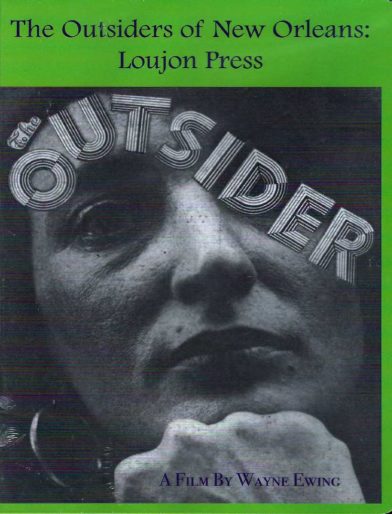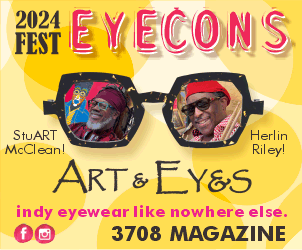One of the first things that come to mind when Charles Bukowski is brought up in conversation is, at least for this critic, the Matt Dillon film “Factotum.” Dillon’s role as a nomadic alcoholic writer, drifting from one American dead end to another, is quite the cipher for the real-world poet, whose observations and commentary just brim with wit and disgust. Some scenes he has an unexplained burn on his face, some scenes he’s wrestling with a bottle of non-descript booze, and others he’s smoking and jotting down notes with pencil and paper.
Through it all, there’s an odd romanticism to the idea of traveling with the wind and writing freely, even if it’s not so glamorous. Especially if it’s not so glamorous.
Does this remind anyone of a certain city?
 In Wayne Ewing’s documentary from 2007, “The Outsiders of New Orleans,” an elderly woman armed with a cane and bohemian cap leads us down Pirate’s Alley in the French Quarter with stories of how cheap the rent used to be. She is “Gypsy Lou” Webb, one of the publishers of the local literary magazine The Outsider, circa the early 1960s. Her company LouJon Press—named after herself and her husband Jon Webb—were the first to publish Charles Bukowski and help bring his work out into a bigger world.
In Wayne Ewing’s documentary from 2007, “The Outsiders of New Orleans,” an elderly woman armed with a cane and bohemian cap leads us down Pirate’s Alley in the French Quarter with stories of how cheap the rent used to be. She is “Gypsy Lou” Webb, one of the publishers of the local literary magazine The Outsider, circa the early 1960s. Her company LouJon Press—named after herself and her husband Jon Webb—were the first to publish Charles Bukowski and help bring his work out into a bigger world.
While Lou sadly passed away late last year in Slidell, her presence as a New Orleans character is made so vivid in “Outsiders.” What began as a slightly awkward and rigidly cut archival video with a public broadcasting feel, filmmaker Wayne Ewing quickly forms into a wonderful bond between subject and camera and, subsequently, audience. Following Lou around the Quarter could’ve been a movie by itself. In one scene, she comes across some young women on the curb by Pirate’s Alley, telling them how she used to sell paintings right where they sit, back when she was an artist. “You never stop being an artist,” one of them says. Lou, hard of hearing, has it repeated back to her, before nodding and smiling.
The film runs, through its almost an hour duration, at an expert’s pace. Ewing crafts his documentation not just as a filmmaker but as a wide-eyed listener and follower. There are cuts here and there that demonstrate more than control over story but love for character. Ewing knows just when to leave for another scene, and when to stay a bit longer. “Outsiders” is a sweet and sweetly following by those who respect the past and the people who lived it like no other.
It’s in its moments of recognition and reflection that Ewing’s “Outsiders” really shines. Perhaps the longest of such sequences takes place at The Upperline Restaurant where she talks and reminisces with JoAnn Clevenger. The two of them are absolutely bright and glowing, looking over the various works of art that Clevenger has collected over the years. Lou recalls them all, including “Homage to the French Quarter” by Noel Rockmore, of which her visage is prominently featured in front of other Quarter denizens. She’s not just in front, but as large as a giant. For someone not originally from the area, Gypsy Lou represented it and its artists so well.
“The Outsiders of New Orleans” is an interesting title for the film too, which covers everything from Lou’s memories to the work by hand of making each magazine from her French Quarter apartment and the students who now study and admire it all. It’s because that, at least for a special time, the Quarter was a true place for oddities and dreamers from all places. It was a hub for thinkers and creators and even just the strange, to get together and be, whether they were passing through or not. And even with this outsider label, they were most welcome in this cauldron of a city.
It still can be this way, but things aren’t the same. From her Slidell home, Lou exclaims how she’d love to return, but laments once again on the rent. “It’s different.” Her early discovery, Charles Bukowski made his way here, before heading out to another corner or cave to dwell from and ponder at. In “Factotum,” cities don’t feel as open to expression as could be, and this alone provides inspiration to Matt Dillon’s Bukowski. The film doesn’t end with victory or any compensation, just a new beginning in another place. The beat goes on, so to speak.
In “Outsiders,” Lou speaks well of the man, even when ending her love speech for him with, “but he drank a lot,” followed by a chuckle. Maybe memory adds a little glamour and romance to what was really dingey and dirty, but the works spun from times gone by speak for themselves as beautiful artifacts. New Orleans couldn’t have been just another bed for Bukowski, right? For Lou, it certainly wasn’t. With Gypsy Lou, it never will be.
“The Outsiders of New Orleans” is available for purchase at LouJon Press.




